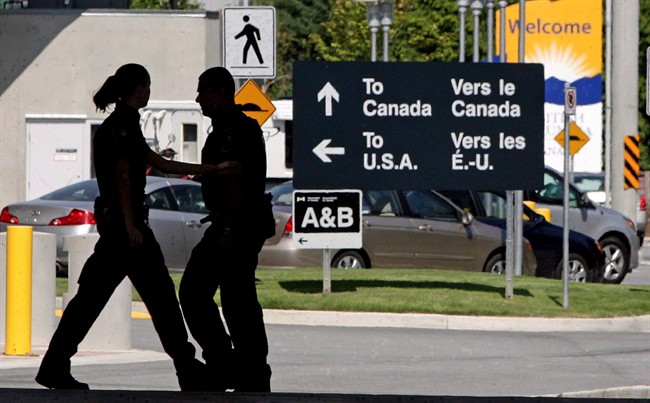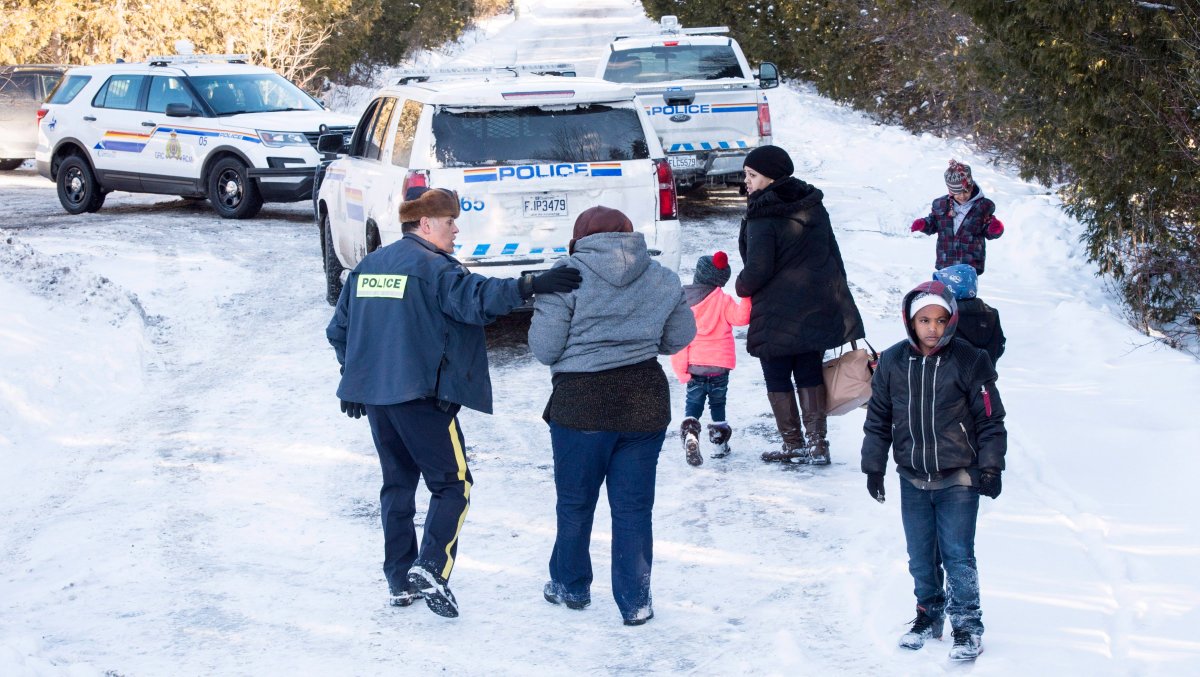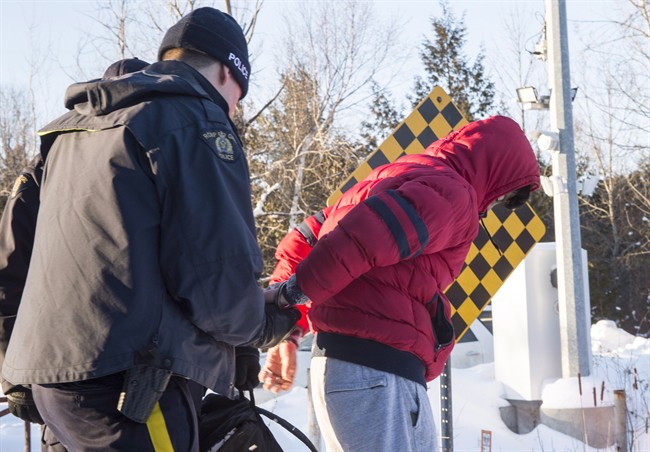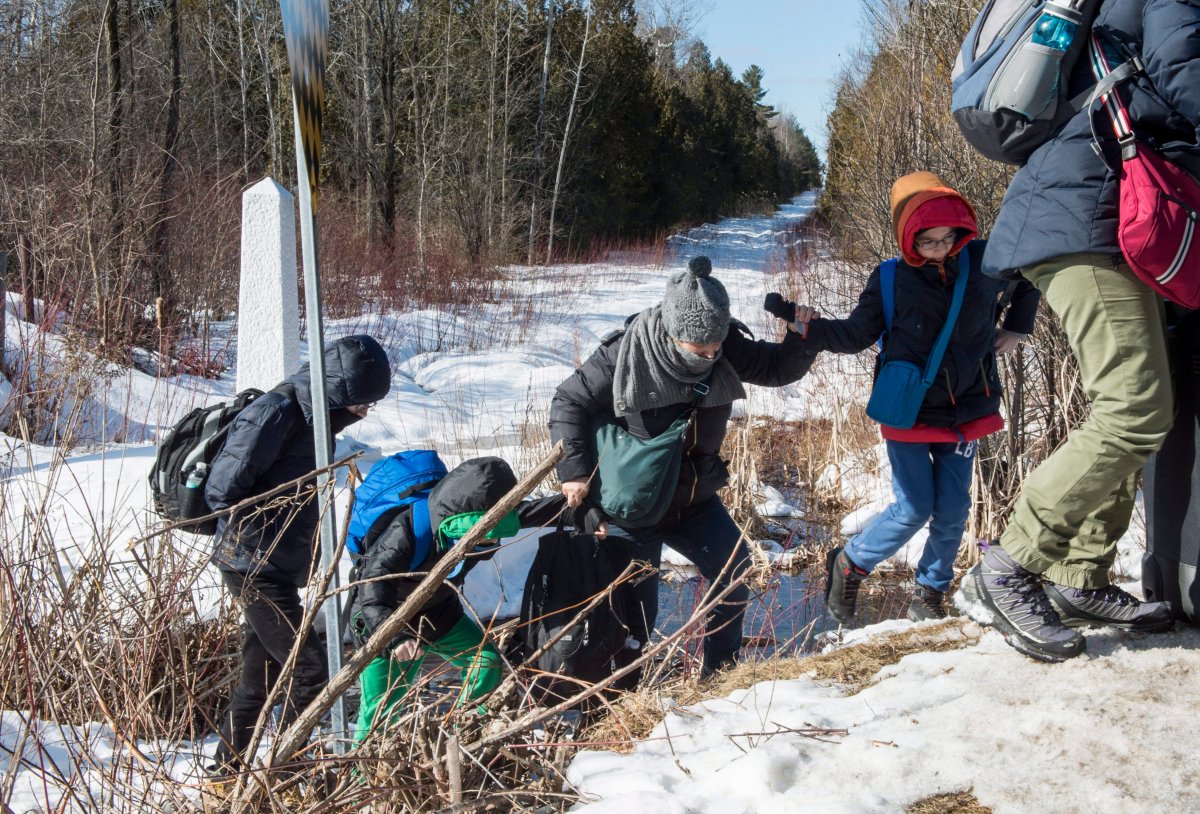Calls for Canada to strike down its so-called Safe Third Country agreement with the U.S. are reaching a fever pitch as three advocacy groups throw their weight behind a legal challenge at the Federal Court.

READ MORE: Canada’s ‘Safe Third Country’ agreement with U.S. faces legal challenge in Federal Court
The Canadian Council for Refugees, Amnesty International and the Canadian Council of Churches are asking the court to step in and force Canada to suspend the agreement in light of major changes to immigration and refugee policies in the United States.
What is the agreement?
Canada and the U.S. signed an agreement 15 years ago effectively forcing refugee claimants to request protection in the first safe country they land. The agreement prevents claimants who were refused in one country from hopping the border to try in the other, or from claiming in both.
The Safe Third Country Agreement applies only to refugee claimants trying to get into Canada from the U.S. either through land-border crossings, by train or at airports.
WATCH: Ottawa refuses to close loophole asylum seekers using to get in

There are some exceptions, most of which have an eye on keeping families united.
But for those among the influx Canadian border towns have experienced this year, the Safe Third Country Agreement meant they would be turned away at traditional land borders.
Instead, those asylum-seekers decided to risk walking over unguarded sections of the Canada-U.S. border, even during the coldest winter months.
WATCH: Asylum seeker dies attempting to cross into Canada, police say

Why do advocates want it suspended?
The thinking is that, in light of U.S. President Donald Trump’s actions targeting immigrants and refugees, it is morally – and legally – wrong to send claimants back to the States.
READ MORE: Lawyers want changes to Safe Third Country Agreement amid deluge of refugee requests
In his first half-year in office, Trump has made his administration’s policy toward immigrants and refugees clear, trying several times to ban them from specific countries.
The president’s actions, coupled with the agreement between Canada and the U.S., is forcing claimants into dangerous situations, the advocates argue.
Immigration Minister Ahmed Hussen has remained steadfast that the parameters of the agreement remain intact, regardless of the trends seen at the border.
What actions has Trump taken?
Even before his election, Trump promised to seek a “total and complete” shutdown of Muslims entering the U.S., telling supporters such a move was necessary to prevent Islamic militants from attacking.
Trump’s most recent ban applies to people from six majority Muslim countries, banning them from entering the United States unless they’re able to prove they have a close relative in the country.
The Supreme Court ruled on June 26 that the temporary travel ban could proceed so long as visa applicants with a “bona fide relationship” with a person or entity in the United States were exempted.
- As Loblaw boycott begins, what to know about all the company’s brands
- Poilievre allowed back in House of Commons after getting kicked out Tuesday
- $34B Trans Mountain pipeline expansion project opens after years of construction
- N.S. man stuck abroad due to lack of available hospital beds ‘in our own province’
What effect could that have on Canada?
The Canadian Council for Refugees argues a reversal or suspension of the Safe Third Party Agreement wouldn’t likely cause an increase in the number of asylum-seekers crossing into Canada.
“While there are large numbers of undocumented people living in the U.S., only those who have a well-founded fear of persecution in their country of origin could benefit by making a claim in Canada,” according to the organization.
READ MORE: Anyone crossing the border illegally whose claim is rejected will be sent home, not back to U.S.
“Those who do not face persecution would be likely to face removal to their home country shortly after arriving in Canada, as their claim would be quickly rejected.”
In effect, the men, women and children crossing the Canada-U.S. border to seek asylum in Canada are cutting off all roads back to the United States and risk being sent back to the countries they fled.
Claiming asylum in Canada
When a person makes a claim for refugee protection, an officer with the Canada Border Services Agency first interviews, fingerprints, photographs and runs a background check on the claimant.
If eligible, the claimant’s file is referred to the Immigration and Refugee Board; if the application is ineligible, the person “may be removed from Canada to their country of citizenship,” a spokesperson with the CBSA said.
If a rejected asylum seeker in Canada has no status in the U.S., they cannot return there.
With files from The Canadian Press and Reuters





























Comments